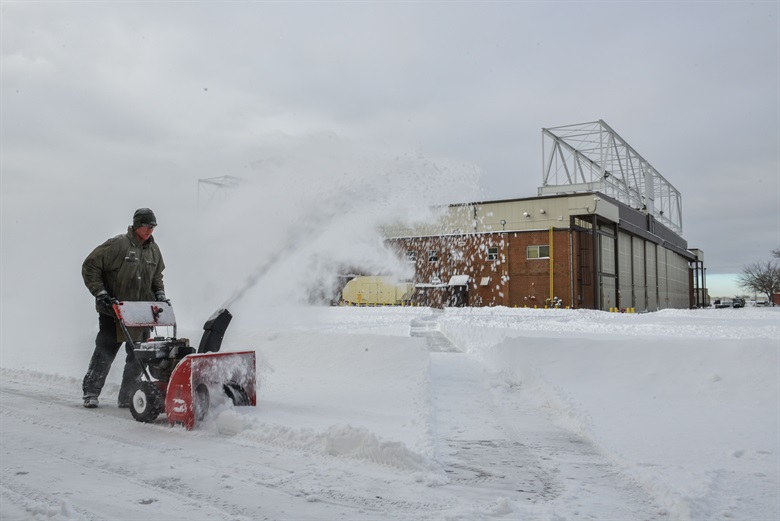In this article, we will discuss the lifespan of a snowblower and what factors can affect its longevity. We will explore the maintenance practices that can help extend its lifespan and provide some tips on how to make sure your snowblower lasts for as many winters as possible. By the end, you will have a better understanding of how long you can expect your snowblower to last and how to take care of it to ensure it serves you well for years to come. So, let’s get started and learn more about snowblower durability! Snowblowers are essential tools for those living in areas with heavy snowfall. They make the back-breaking task of manually shoveling snow a thing of the past. However, like any other piece of machinery, snowblowers have a limited lifespan. Several factors can affect how long a snowblower will last, including build quality, frequency and duration of use, maintenance and care, climate and weather conditions, price and quality correlation, brand reputation, and customer reviews.
Build quality and materials used play a crucial role in determining the lifespan of a snowblower. Snowblowers that are constructed with high-quality materials and components are more likely to withstand the test of time. Look for models that have durable frames, sturdy augers, and powerful engines. These features not only increase the longevity of the snowblower but also contribute to its overall performance and effectiveness.
When it comes to the frequency and duration of use, the more a snowblower is used, the more wear and tear it will endure. Regular use can put a significant strain on the machine, potentially decreasing its lifespan. This is especially true for heavy or prolonged use during severe winter conditions. However, snowblowers that are only used occasionally may still require maintenance and care to ensure they remain in good working condition.
Proper maintenance and care are vital for prolonging the lifespan of a snowblower. Regular cleaning and debris removal help prevent clogs and damage to the machine. Lubrication and oil changes keep the moving parts functioning smoothly. It is also important to replace any worn-out or damaged parts promptly. Additionally, proper storage and offseason maintenance, such as fuel stabilization and covering the snowblower, can help protect it from the elements and extend its lifespan.
The climate and weather conditions in which a snowblower is used can also impact its lifespan. Heavy snowfall and ice can put a significant strain on the machine, potentially causing damage to its components. Extreme temperatures, both hot and cold, can affect the performance and longevity of the snowblower. Furthermore, the presence of salt and other corrosive substances, often used to melt ice on roads and walkways, can accelerate the wear and tear of the machine.
Price and quality correlation is an important consideration when purchasing a snowblower. While it is tempting to opt for a cheaper model, it is often worth investing in a higher-priced snowblower that offers better durability and performance. Cheaper models may not last as long or handle heavy snowfall as effectively as their more expensive counterparts. It is important to consider the value for money when choosing between different price ranges.
Brand reputation and customer reviews are valuable sources of information for potential snowblower buyers. Researching reputable brands known for their quality and durability can help ensure that the chosen snowblower will last for several years. Reading customer reviews and ratings can provide insights into the experiences of others who have purchased the same model, helping buyers make informed decisions.
There are certain signs that indicate a snowblower may need replacement. Decreased performance and efficiency, such as a decrease in throwing distance or clearing capacity, can be an indication of wear and tear. Frequent breakdowns and repairs are also warning signs that the snowblower may be reaching the end of its lifespan. Excessive noise or vibrations during operation can be a safety hazard and should not be ignored.
To extend the lifespan of a snowblower, proper usage techniques should be employed. This includes not overloading the machine and using it within its recommended capacity. Regular maintenance routines, such as cleaning, lubricating, and replacing worn-out parts, should be followed. Additionally, protective measures, such as using fuel stabilizers, covering the snowblower, and storing it in a dry place, should be taken during harsh weather conditions.
In conclusion, the lifespan of a snowblower can be influenced by various factors. Build quality and materials used, frequency and duration of use, maintenance and care, as well as climate and weather conditions all play a significant role. Price and quality correlation, brand reputation, and customer reviews should be considered when making purchasing decisions. Signs that a snowblower may need replacement include decreased performance, frequent breakdowns, excessive noise, and safety hazards. By following proper usage techniques, regular maintenance routines, and protective measures, the lifespan of a snowblower can be maximized, ensuring years of reliable use.
